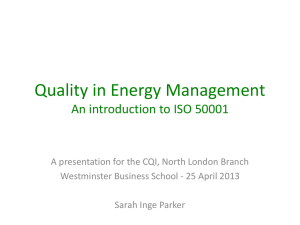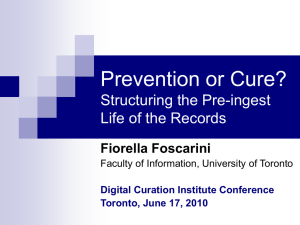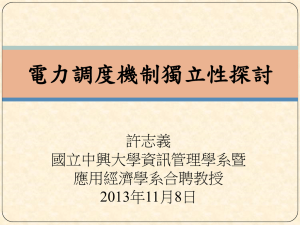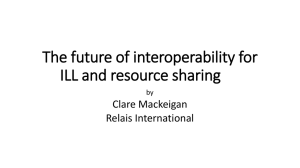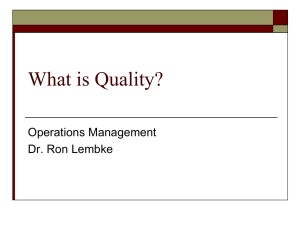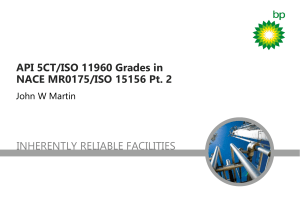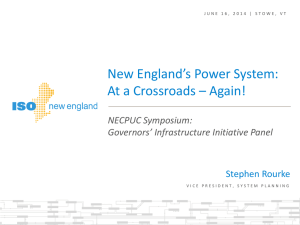Document
advertisement
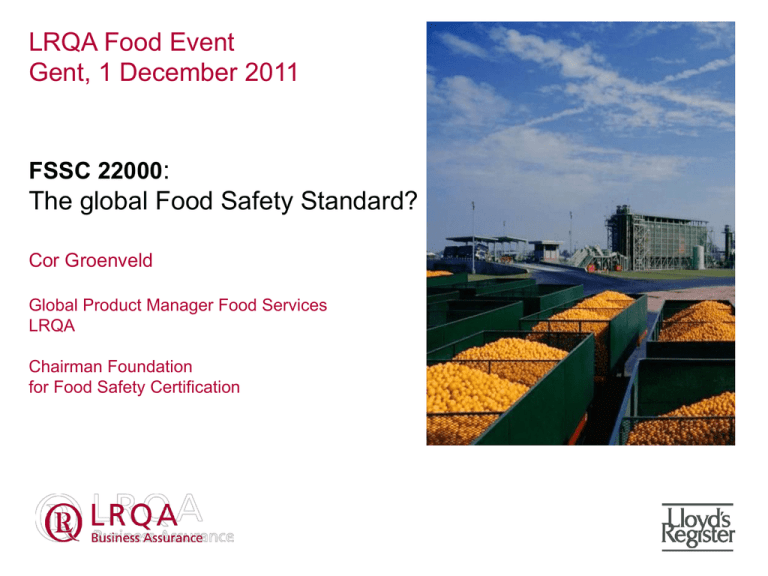
LRQA Food Event Gent, 1 December 2011 FSSC 22000: The global Food Safety Standard? Cor Groenveld Global Product Manager Food Services LRQA Chairman Foundation for Food Safety Certification Agenda • FSSC 22000 • ISO Food Safety Management Standards • Integrity of audits and certification FSSC 22000 Food Safety System Certification Scheme ISO 22000 and PAS 220 Background and benefits of the scheme • Need for international harmonisation of food safety standards • Need for supply chain approach • Use of existing, independent, international standards • ISO 22000, PAS 220 (ISO 22002-1) and ISO 22003 • Scope: food & food ingredient manufacturing • New: packaging material manufacturing (ISO 22000 & PAS 223) • Stakeholder approval & commitment (industry, retailers). Background and benefits of the scheme • High quality food safety audits (integrity program) • Management System Accreditation (ISO guide 17021) • Independent scheme management • Transparency • Non profit approach • www.fssc22000.com Food Safety Management Systems: a model elements of ISO-9001:2000 Codex Alimentarius: Management HACCP System and System elements Guidelines for its application • PAS xyz / ISO 22002-xyz HACCP principles • GAP,GMP,GDP, GRP’s (Codex Alimentarius) • Codex Alimentarius: General Principles of Food Hygiene (CAC/RCP Good 1) Practices / PRP’s Food Safety Management Systems: a model Management System elements HACCP principles (Codex Alimentarius) Good Practices / PRP’s Food safety management system Food safety system Basis Food Safety Management Systems: Certification FSSC 22000 Certification Management System elements HACCP principles (Codex Alimentarius) Sector PAS xyz / ISO 22002xyz HACCP Codex Certification GAP assessment PRP’s ISO 22000 : 2005 • • • • • • • • • International, independent standard Generic food safety standard for the whole food supply chain Developed by HACCP experts representing stakeholders State of the art, best practices Focus on supply chain assurance Management System principles embedded Drives continuous improvement Aligned with Codex Alimentarius ISO 22000 family of standards PAS 220 : 2008 • Initiated by Food Manufacturers and CIAA • Publicly Available Specification • Prerequisite programs on food safety for food manufacturing • Additional to ISO 22000 (chapter 7.2.3) • Harmonization of food manufacturer’s PRP’s • Directly addresses requirements of GFSI • New: ISO TS 22002/1 is published as follow up PAS 220 : 2008 & ISO TS 22002-1 Requirements for: • • • • • • • • • • • • • • • Construction, layout buildings & facilities Layout premises, workspace, employee facilities Supplies of utilities (like air, water, energy) Supporting activities (like waste, sewage) Suitability of equipment Management purchased materials Prevention cross contamination Cleaning and sanitizing Pest control Personnel hygiene Rework Product recall Warehousing Product information, consumer awareness Food defense, biovigilance, bioterrorism FSSC Scope Categroy codes ISO/TS 22003 Categories Examples of sectors Applicable PRP standard Additional requirem ents C (in scope) perishable animal products i.e. meat, poultry, eggs, dairy and fish products ISO/TS 22002-1 / PAS 220 Appendix IA D (in scope) perishable vegetal products i.e. packed fresh fruits and fresh juices, preserved fruits, packaged fresh vegetables, preserved vegetables ISO/TS 22002-1 / PAS 220 Appendix IA E (in scope) products with a long shelf life at ambient temperature i.e. canned products, biscuits, snacks, oil, drinking water, beverages, pasta, flour, sugar, salt ISO/TS 22002-1 / PAS 220 Appendix IA L (in scope) (bio)chemical manufacturing food ingredients i.e. vitamins, additives, and bio-cultures but excluding technical and technological aids ISO/TS 22002-1 / PAS 220 Appendix IA M (NEW in scope) packaging material manufacturing i.e. packaging material PAS 223 No Certification process Foundation for Food Safety Certification FSSC 22000 certification scheme Board of Stakeholders ISO-22000 & PRP doc & FSSC requirements Certification regulation & ISO-22003 Accreditation body Certified Food Manufacturer Accredited Certification body ISO Guide 17021 Current Situation • High commitment from Global Food Manufacturers • Recognized by GFSI • Accredited certification available from January 1st 2011 • JAZANZ, JAB, ANAB, Standards Council Canada and European Accreditation bodies (EA) accept the scheme • Scheme documents and other information on website www.fssc22000.com • New revision: GFSI guidance V6 & extension Packaging • Board of Stakeholders in place • 57 licensed CB’s, of which 29 accredited • > 800 certificates since start Jan 2011 ISO developments ISO Working Group Food Standards • • • • ISO TC34 / SC17 (Technical Committee 34, Sub Committee 17) Members: food safety experts national standardization organisations Responsible for food safety management standards (ISO 22000 series) Current Standards: • • • • • • ISO 22000: Food Safety Management Systems ISO 22002-1: PRP’s for Food Manufacturing ISO 22003: Requirements for ISO 22000 audits ISO 22004: Guideline for ISO 22000 ISO 20005: Traceability Under development: • ISO 22002/xyz per Food Chain Category • • • • • ISO 22002-2 Catering / Restaurants ISO 22002-3 Primary Production Next priority: transport / storage / warehousing, animal feed, packaging Handbook: how to use ISO 22000 Rules for developing ISO 22002/xyz ISO 22002/xyz Food Categories Ref. ISO 22003 Development of PAS for Pre-requisite Programs In addition to PAS 220 the following PAS’ are published: • PAS 222: PRP’s on food safety for manufacturing Food for Animals • PAS 223: PRP’s on food safety for manufacturing Packaging Materials Future expectation ISO 22002/z: PRP’s Catering ISO 22002/y: PRP’s Packaging Manufacturing ISO 22002/x: PRP’s Feed Manufacturing ISO 22002/1: PRP’s Food Manufacturing Etc. ISO 22000: generic FSMS standard Integrity of Audits and Certification How to ensure integrity of audits? What are the requirements? • GFSI requirements (Guidance Document) • Scheme requirements, including integrity programmes • Certification Body procedures / processes • Accreditation Most critical factors: • Education, experience and skills of auditor • Initial qualification and training process of Certification Body • Qualification per scheme and sector • Sufficient time for the audit • Reviews and monitoring of the auditor • Continuous development of the auditor Any Questions? cor.groenveld@lrqa.com www.food.lrqa.com Follow us: Connect with me: www.twitter.com/lrqafood http://nl.linkedin.com/in/corgroenveld Introduction Lloyd’s Register Group at a glance • • • • • • 7,500 employees at offices in 250 cities and towns covering all parts of the world BAsed in more then 100 countries Celebrated our 250 year anniversary last year Four business divisions: • Marine • Energy • Transportation • Management systems (LRQA) 2009/10 turnover US$1.25bn 5000 certificates in the Food Supply Chain

